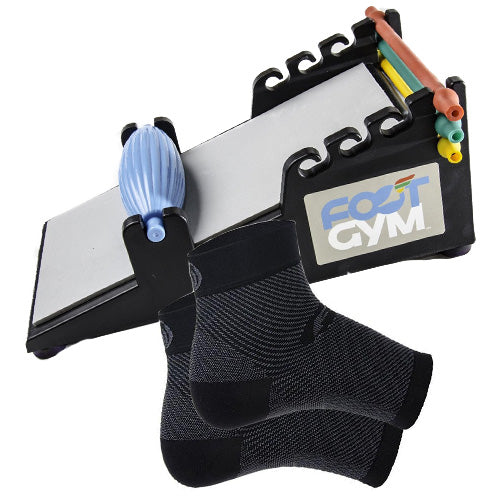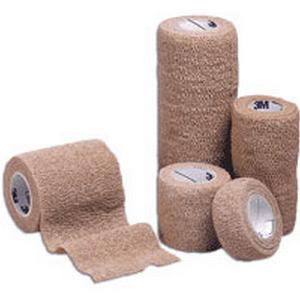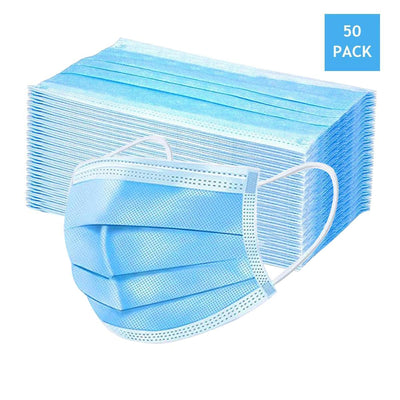There are many different mobility devices on the market and they are all designed to assist you in getting around. Whether it be for a temporary period of time or it is a long-term need, knowing what mobility device works best for you is important. Below is a short description of the different mobility devices on the market.
Mobility devices and how to choose:
Orthotic Devices and Braces:
 Orthotic devices and braces refer to support and bracing of the lower extremities. These devices are designed to support and stabilize your muscles and bones. As a result, patients have an easier time walking or moving and could help reduce the risk of falling. An ankle foot orthosis (AFO) is one of the most common braces to support the ankle and foot.
Orthotic devices and braces refer to support and bracing of the lower extremities. These devices are designed to support and stabilize your muscles and bones. As a result, patients have an easier time walking or moving and could help reduce the risk of falling. An ankle foot orthosis (AFO) is one of the most common braces to support the ankle and foot.
Orthotic devices and braces are a good choice for pain management and added support. These products are the simplest of mobility devices and require a person to have more control and balance. Being fitted for an AFO is a good option if you experience foot drop, which is a difficulty in lifting the front part of the foot while walking due to weakness or paralysis of the foot muscle. An AFO helps prevent tripping and falling by providing support to the front part of the foot allowing for adequate foot clearance when walking. These can be paired with other mobility devices for added positioning and support.
Canes:
 A cane is one of the simplest mobility devices out there and is designed to assist the user in walking with added stability and security. They are very simple and offer some of the least stability out of the other mobility devices on the market. Canes are basically a long, thin stick that is rounded or curved at the top for gripping, with a rubber stopper at the bottom to add traction. Typically, canes are made of wood, metal, or plastic. There are also quad canes for extra support, these have four supports on its base. Canes can also be foldable, heavy duty, adjustable, and customizable.
A cane is one of the simplest mobility devices out there and is designed to assist the user in walking with added stability and security. They are very simple and offer some of the least stability out of the other mobility devices on the market. Canes are basically a long, thin stick that is rounded or curved at the top for gripping, with a rubber stopper at the bottom to add traction. Typically, canes are made of wood, metal, or plastic. There are also quad canes for extra support, these have four supports on its base. Canes can also be foldable, heavy duty, adjustable, and customizable.
A cane is best for people who can walk on their own and can shift weight from one leg to the other, but feel they need some extra support for balance. When selecting the type of cane, a quad cane offers more support due to its larger base. The drawback of a quad cane is they tend to be more awkward to move around and position. Safety note: when using a quad cane make sure all points are on the ground before walking.
Crutches:
 Crutches go on either side of your body to transfer the weight from the legs to the upper body. The two main types of crutches are standard and forearm crutches. The standard crutch is placed under the armpit, with handles partially down the shaft, parallel to the pad at the top. Your weight should be carried on your hands not your armpits, and always lead with your strong leg, never the weak one. In certain cases, the weak leg should never be on the ground when walking. The forearm crutch, or elbow crutch, has a cuff at the top where you place your forearm through and clutch the handle located partially below on the shaft. These are typically used in the US for long-term use, as opposed to the standard crutch which is typically used for a short period of time. Depending on your needs, you can get a standard type crutch or a forearm crutch that has some sort of platform, adjustable handles and you can strap your arm in for more support and control. The other type of crutch is a hands-free leg crutch, which is a modified crutch where you rest your leg on a platform and strap it in. It basically acts as your leg.
Crutches go on either side of your body to transfer the weight from the legs to the upper body. The two main types of crutches are standard and forearm crutches. The standard crutch is placed under the armpit, with handles partially down the shaft, parallel to the pad at the top. Your weight should be carried on your hands not your armpits, and always lead with your strong leg, never the weak one. In certain cases, the weak leg should never be on the ground when walking. The forearm crutch, or elbow crutch, has a cuff at the top where you place your forearm through and clutch the handle located partially below on the shaft. These are typically used in the US for long-term use, as opposed to the standard crutch which is typically used for a short period of time. Depending on your needs, you can get a standard type crutch or a forearm crutch that has some sort of platform, adjustable handles and you can strap your arm in for more support and control. The other type of crutch is a hands-free leg crutch, which is a modified crutch where you rest your leg on a platform and strap it in. It basically acts as your leg.
Crutches are a good choice for a variety of people. Often times crutches are used when there are weight bearing concerns after a surgery or injury to the lower limbs. These are good for someone who has good arm, shoulder, and hand function. Forearm crutches are good for someone who can walk on their own but need a little extra support, therefore allowing more control and balance.
Walkers:
 Walkers range from simple, lightweight, standard models to heavy-duty, wheeled or knee walkers. Traditionally, walkers are a frame with handles and legs that must be lifted for movement. There are variations with wheels, that are typically on the front two legs. Knee walkers are designed to support one side of the body, by placing the injured leg, foot, ankle or knee on the platform and ‘scooting’ with your other leg.
Walkers range from simple, lightweight, standard models to heavy-duty, wheeled or knee walkers. Traditionally, walkers are a frame with handles and legs that must be lifted for movement. There are variations with wheels, that are typically on the front two legs. Knee walkers are designed to support one side of the body, by placing the injured leg, foot, ankle or knee on the platform and ‘scooting’ with your other leg.
A walker should be considered if you have decent upper body control and can walk on your own but have difficulty with balance or a fear of falling. If you are continuously using walls or furniture to offer support, then a walker might be right for you. If you find that it is too hard to lift the walker, moving to a wheeled walker could help. A wheeled walker allows for easier movement, as you don’t have to lift the device to move but can also have the stoppers for extra support and control. A knee walker is typically chosen for short-term use after an injury or surgery to one of the lower limbs and requires the use of one leg. These are chosen for someone with weight bearing issues, typically to a foot or ankle, and still have control of the other as it is used to propel you forward.
Rollators:
 Rollators are like a walker only they have wheels on four legs and just need to be pushed for movement. They are usually equipped with brakes to ensure full control. Most rollators have a seat and a locking mechanism for the wheels to allow a person to take a break and sit down.
Rollators are like a walker only they have wheels on four legs and just need to be pushed for movement. They are usually equipped with brakes to ensure full control. Most rollators have a seat and a locking mechanism for the wheels to allow a person to take a break and sit down.
When choosing a rollator the requirements are similar to choosing a walker but requires you to have more control. If you can walk around but find you tire easily and need breaks to rest, a rollator is a good option. It will provide you with extra support and an option to sit down when winded.
Wheelchairs:
 Wheelchairs at their simplest form are a chair with wheels. They come in different shapes, sizes, and colors, but the most common distinctions are between a powered chair or a manual chair. A powered wheelchair is propelled by a battery or electric motor, while a manual chair is propelled by the user or their attendant. Powered chairs can be fully powered, or they can be what’s known as a Pushrim-activated power assist. The power assist wheelchairs are designed to amplify the user’s strength when manually operating the chair, resulting in less energy used by the user. Some specialized seating options available are tilt in space, reclining, elevating leg rest, seat elevating, and standing. There are wheelchairs on the market designed to meet anyone’s needs from rolling across the sand to playing sports and racing. Technical innovations are also allowing for new chairs, like a self-balancing chair, where the user uses their body weight to propel the chair. There are also ways to get a custom built chair specifically for you.
Wheelchairs at their simplest form are a chair with wheels. They come in different shapes, sizes, and colors, but the most common distinctions are between a powered chair or a manual chair. A powered wheelchair is propelled by a battery or electric motor, while a manual chair is propelled by the user or their attendant. Powered chairs can be fully powered, or they can be what’s known as a Pushrim-activated power assist. The power assist wheelchairs are designed to amplify the user’s strength when manually operating the chair, resulting in less energy used by the user. Some specialized seating options available are tilt in space, reclining, elevating leg rest, seat elevating, and standing. There are wheelchairs on the market designed to meet anyone’s needs from rolling across the sand to playing sports and racing. Technical innovations are also allowing for new chairs, like a self-balancing chair, where the user uses their body weight to propel the chair. There are also ways to get a custom built chair specifically for you.
A wheelchair is recommended for someone who has significant weight bearing concerns to the lower limbs or cannot walk on their own. Out of all the mobility devices, these provide the most control and support. When deciding between a manual or powered chair it is important to consider your upper body strength and control. If you have full control of your upper body and can propel yourself forward using the wheels, then a manual chair can be used. There is an option to get a power assist that will amplify the user's strength in a manual chair if needed. A power chair, however, is required if a person has little to no dexterity in their hands. These chairs can be operated by using a toggle located on the front or back of the chair. This is commonly used for people with spinal cord injuries or paralysis of some kind.
Mobility Scooters:
 Mobility scooters are another option for people with limited range of motion or an inability to stand or walk for long periods of time. These are designed to provide a little extra help getting around. The user exerts little effort, but it does require upper body control and strength to operate. They have become one of the more popular choices over the years since technology has improved and they tend to be more affordable than powerchairs.
Mobility scooters are another option for people with limited range of motion or an inability to stand or walk for long periods of time. These are designed to provide a little extra help getting around. The user exerts little effort, but it does require upper body control and strength to operate. They have become one of the more popular choices over the years since technology has improved and they tend to be more affordable than powerchairs.
A mobility scooter should be chosen if a user has mild mobility issues and can either get around on their own some of the time or has another device to compliment.
It can be hard to come to terms with changes occurring to our bodies. It is important to acknowledge and assess these changes and how they are affecting your daily activities. If you find yourself getting weaker, having a fear of falling, or being unable to participate in activities that you used to enjoy, then it may be time to consider a mobility device. All the devices listed above can improve your mobility and increase your independence. If you feel like it might be time to consider a mobility device, contact your primary care physician today. Check out our mobility products, here. If we do not have what you are looking for give us a call or email and we will be more than happy to assist you in finding one!
This article is only intended to give you information and tips to give you more knowledge on choosing a mobility device but should not be your only resource. It is always recommended to discuss what is best for you with your healthcare provider.
Check back later this month for our updated mobility line or send an email to info@getcompletecare.com with your inquiry. One of our customer representatives will reach out to assist you!



























































































